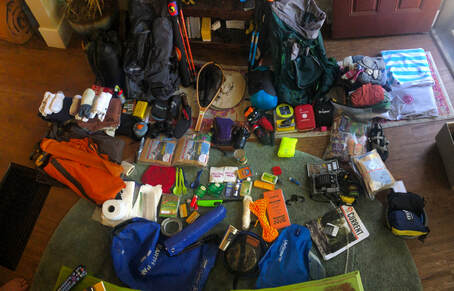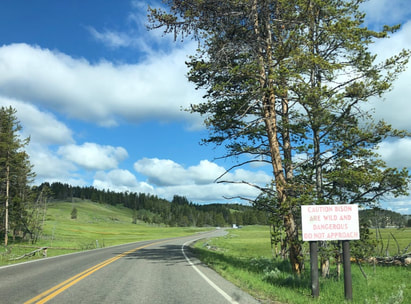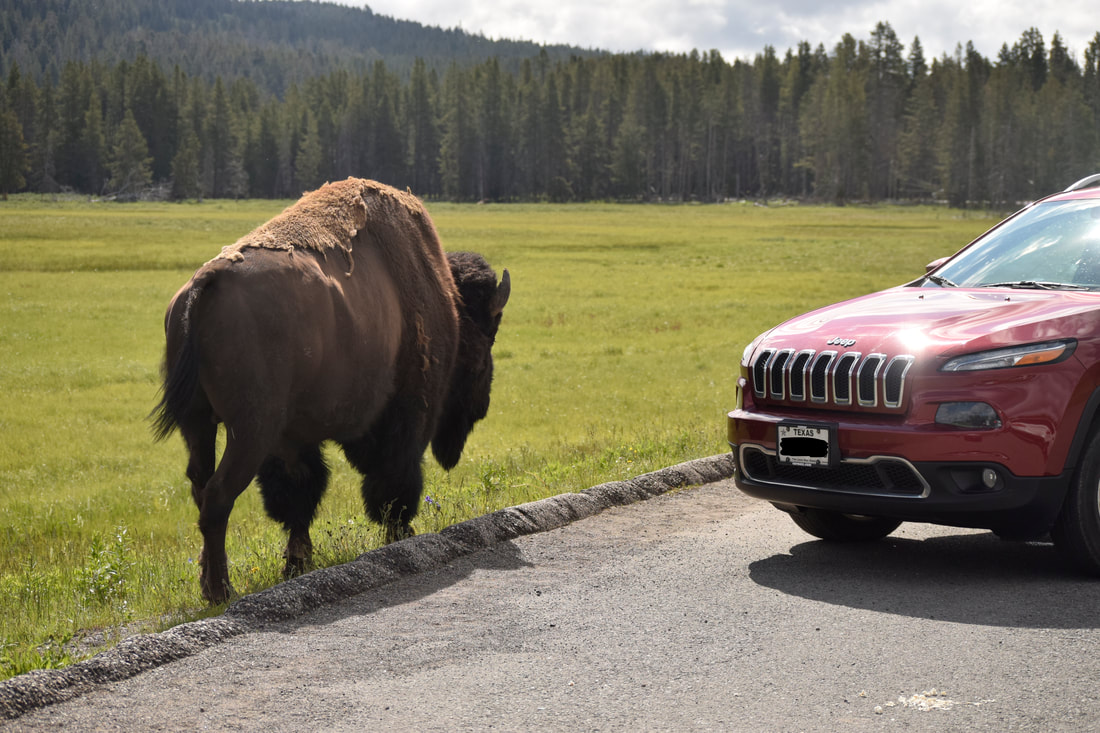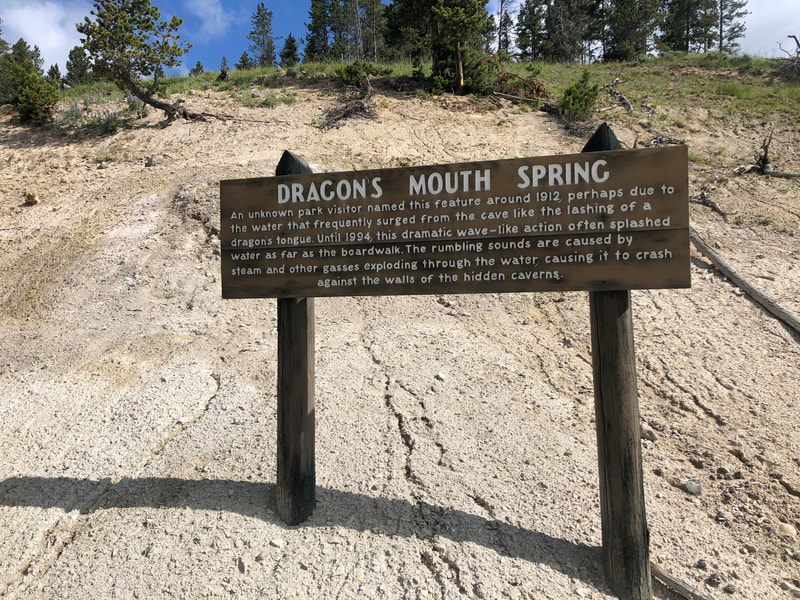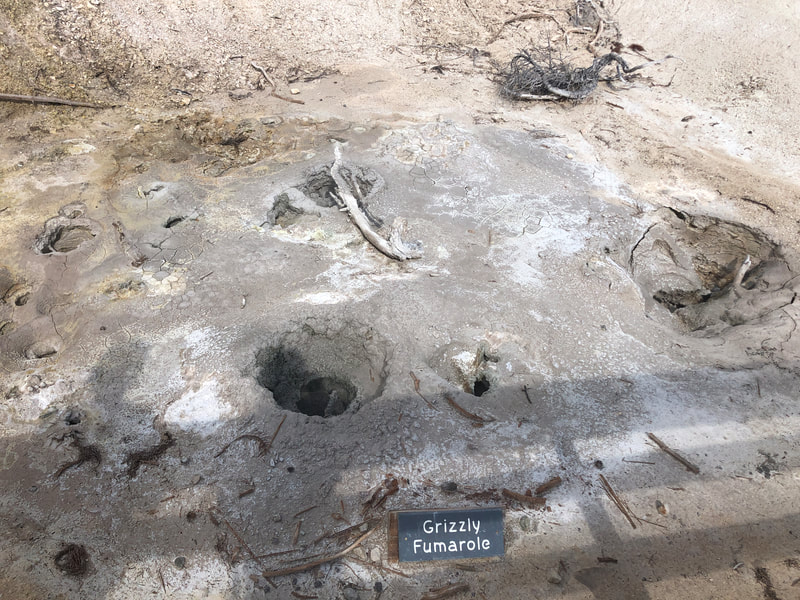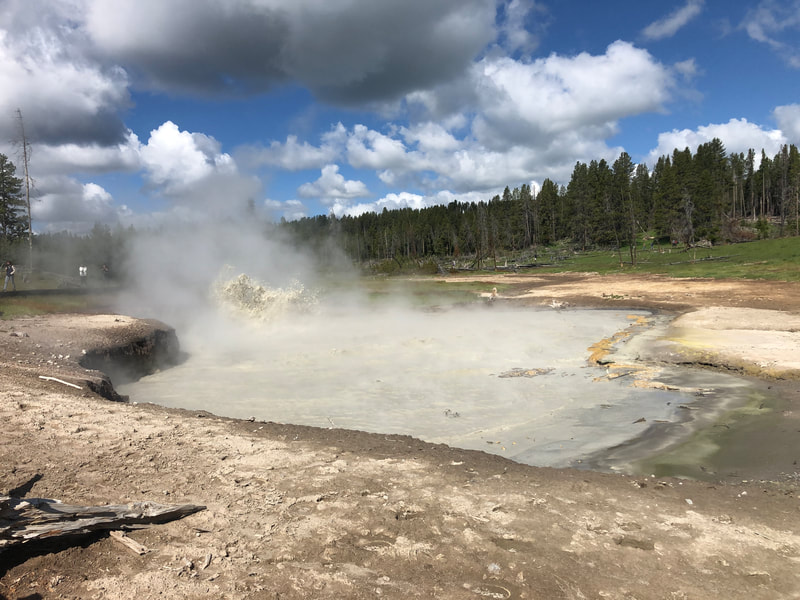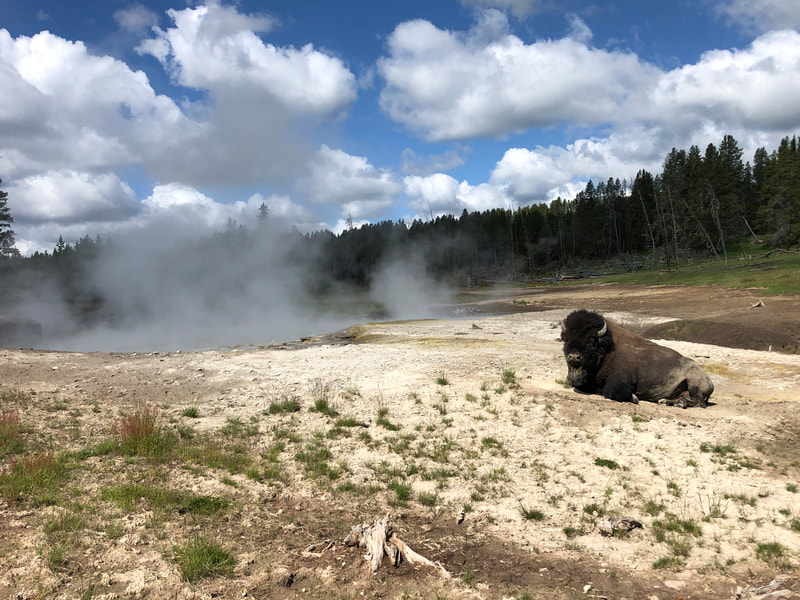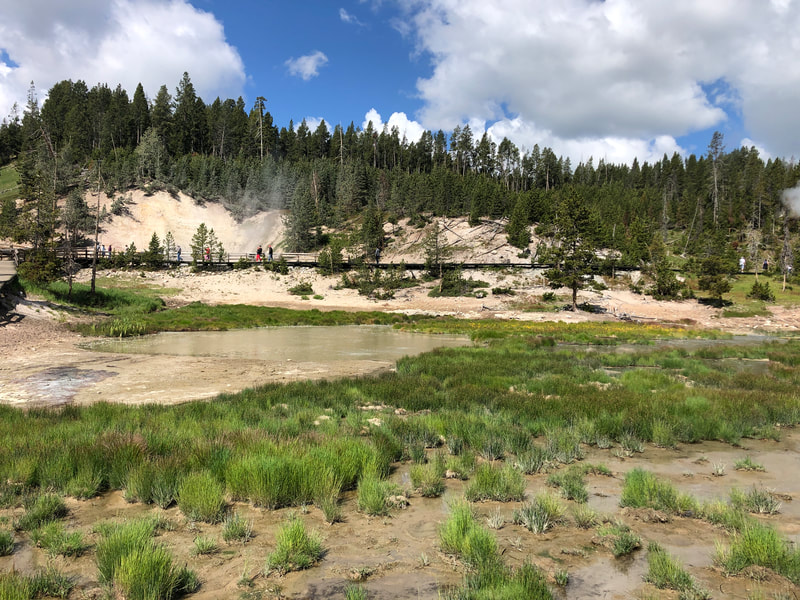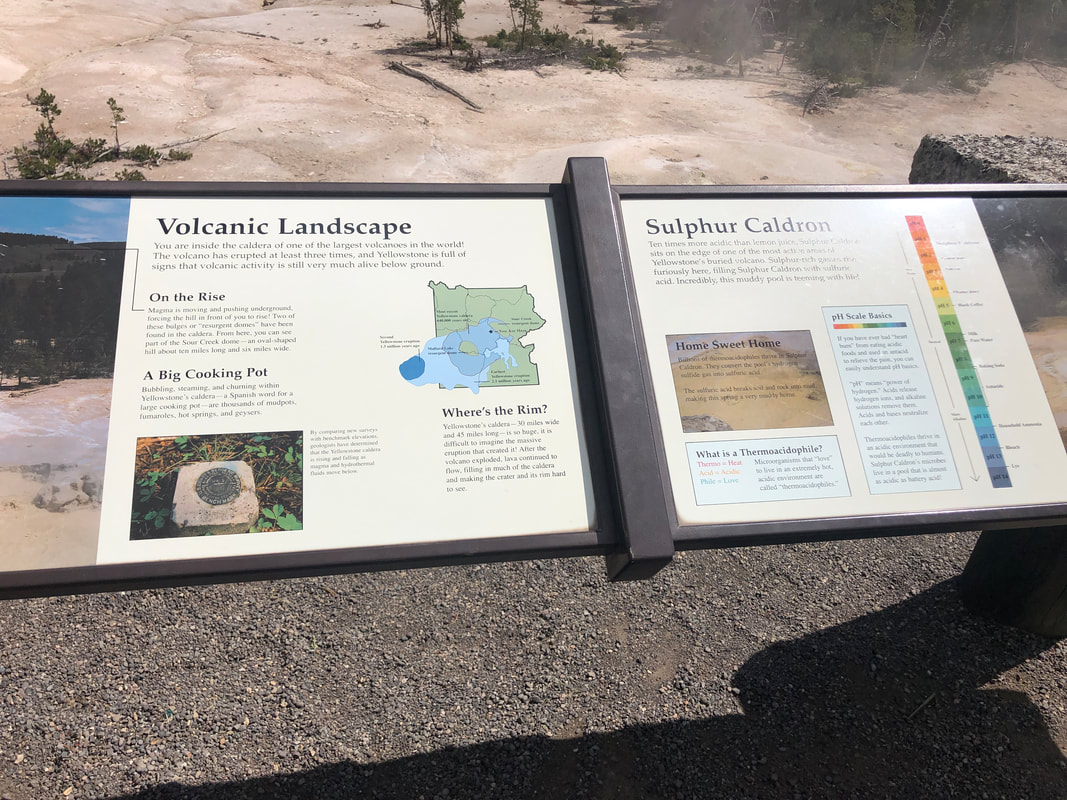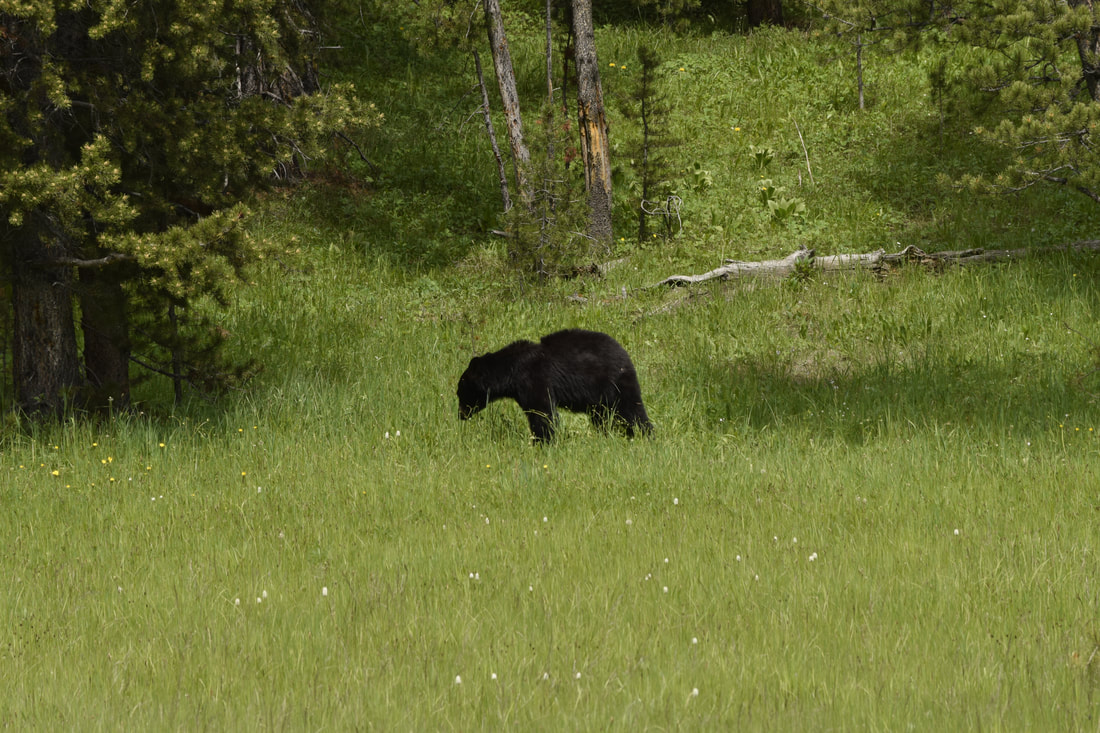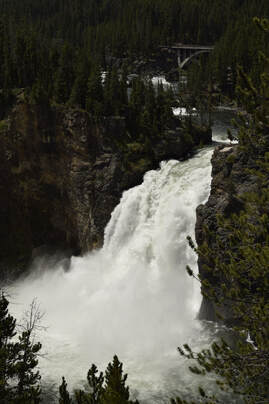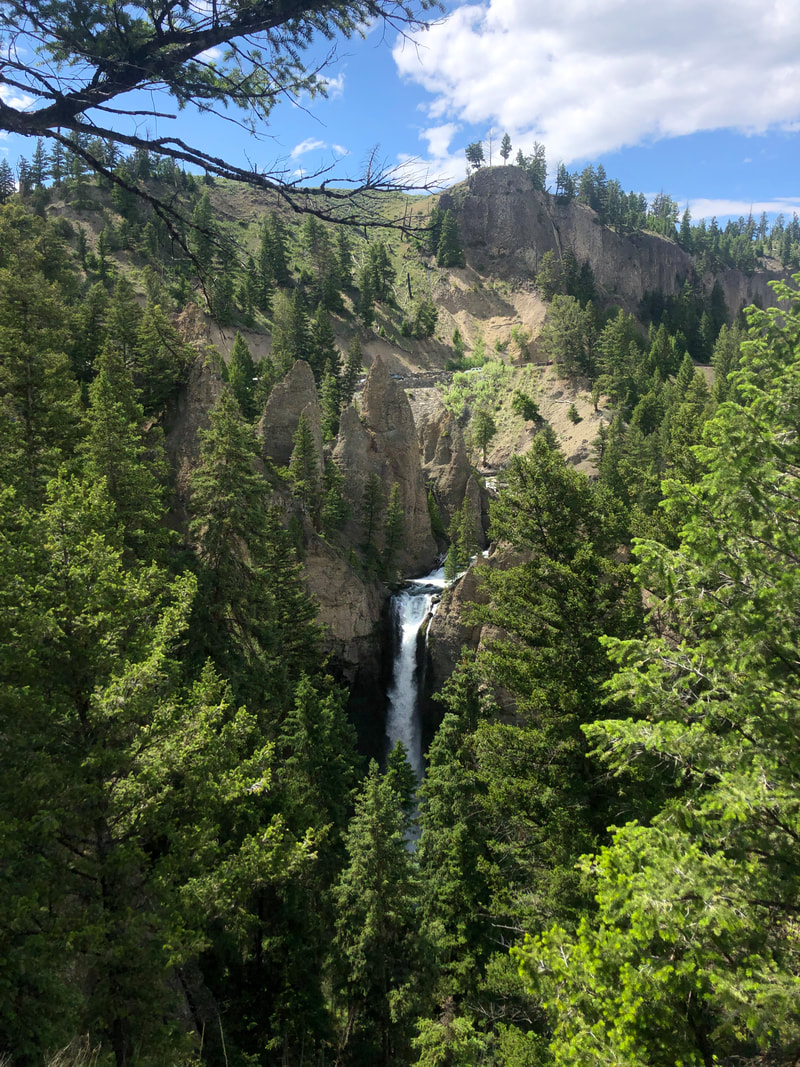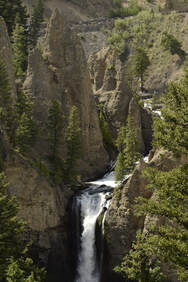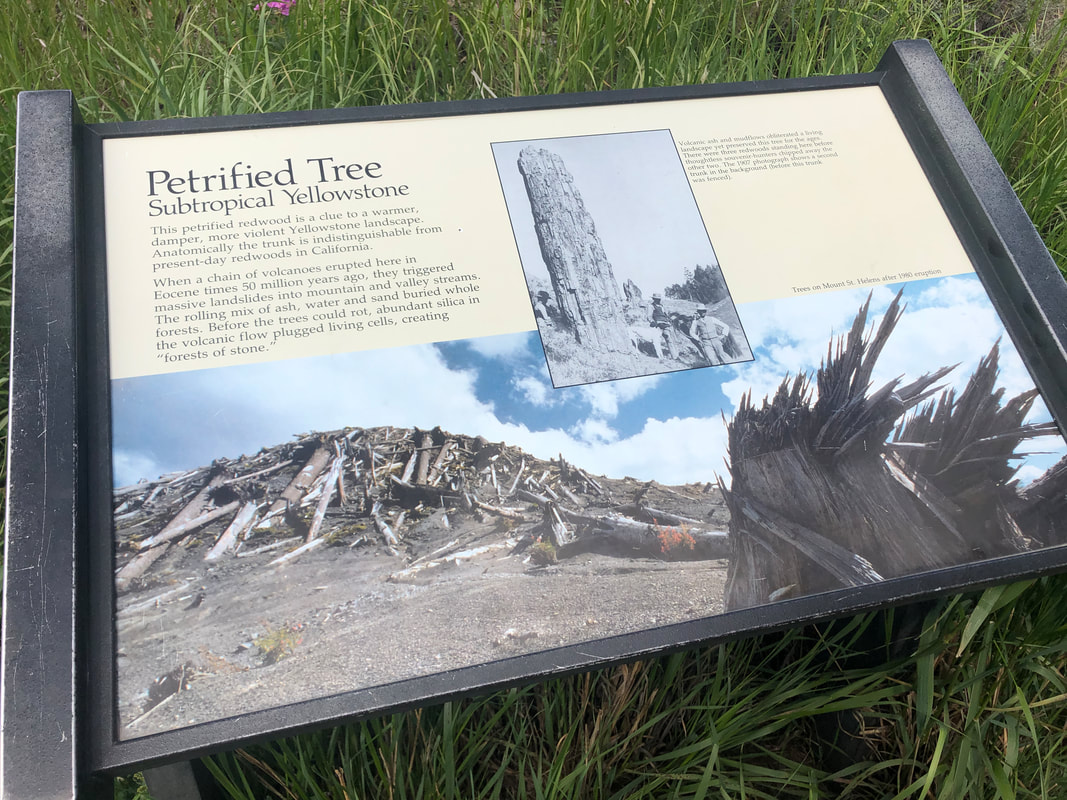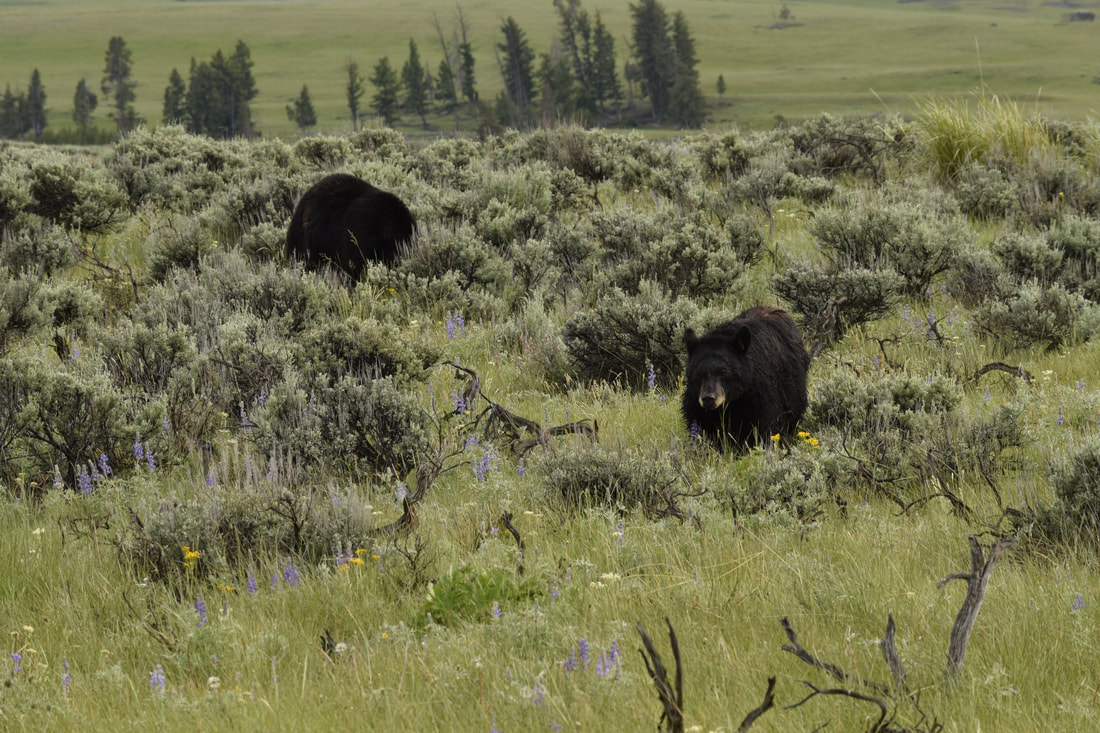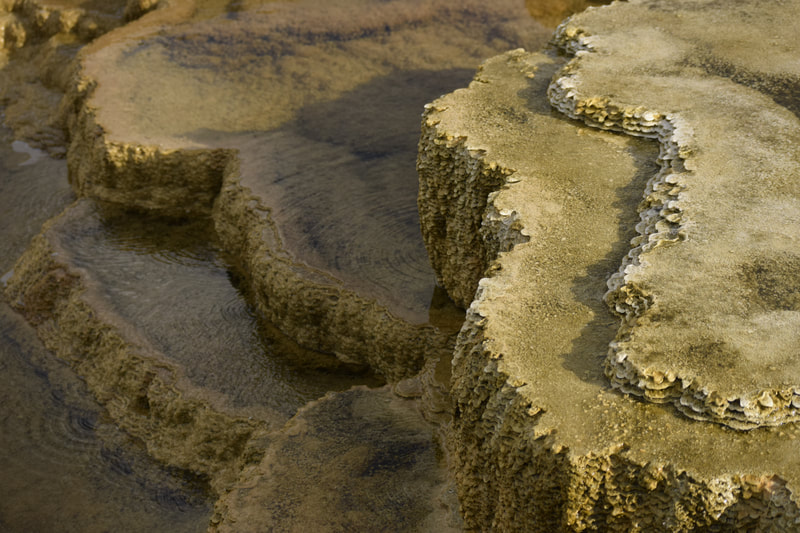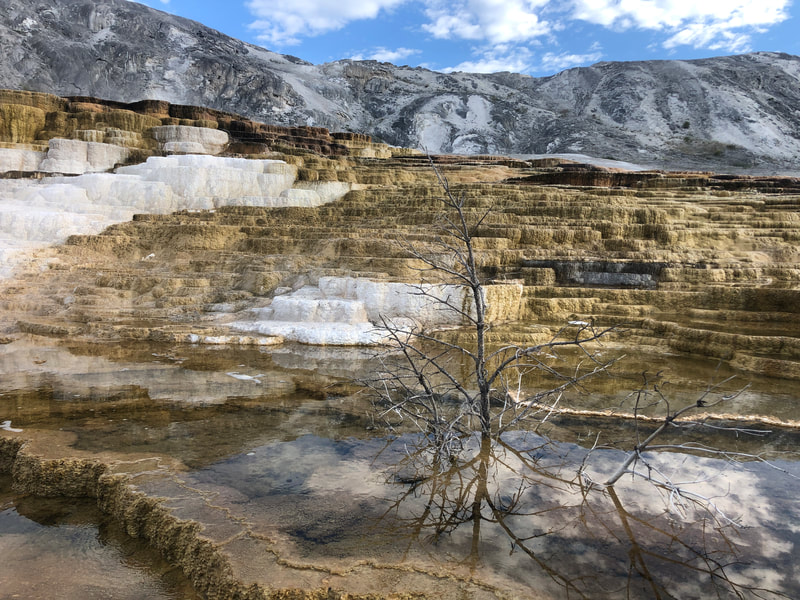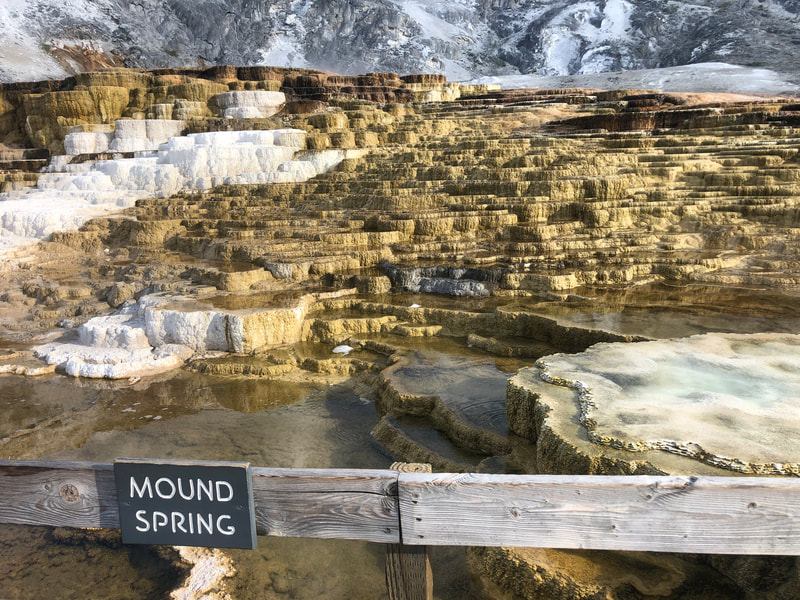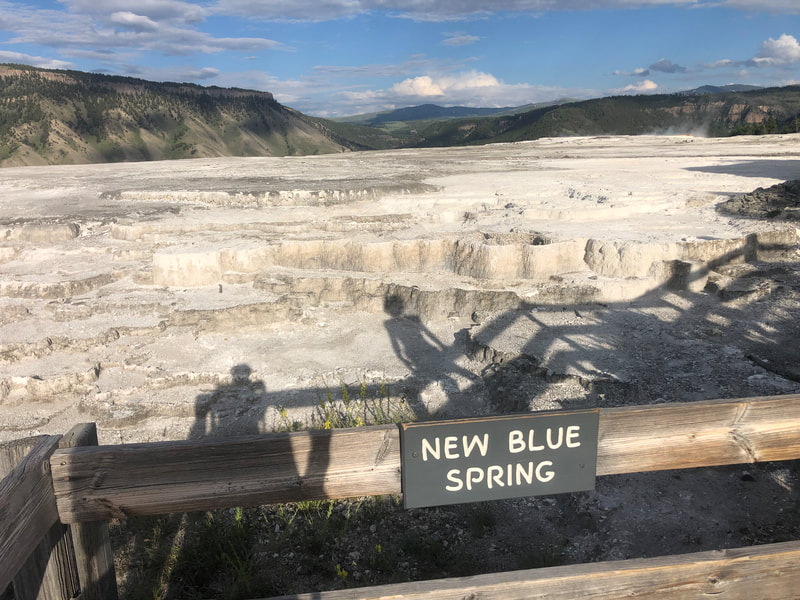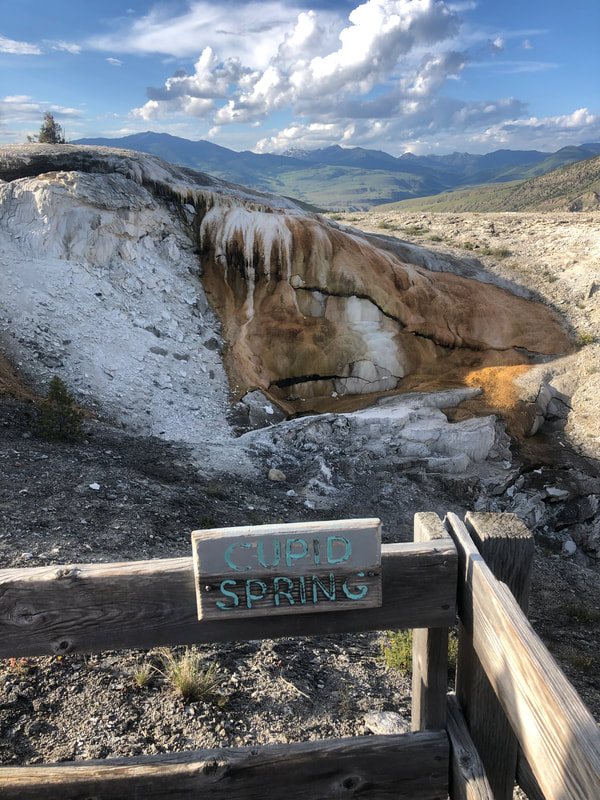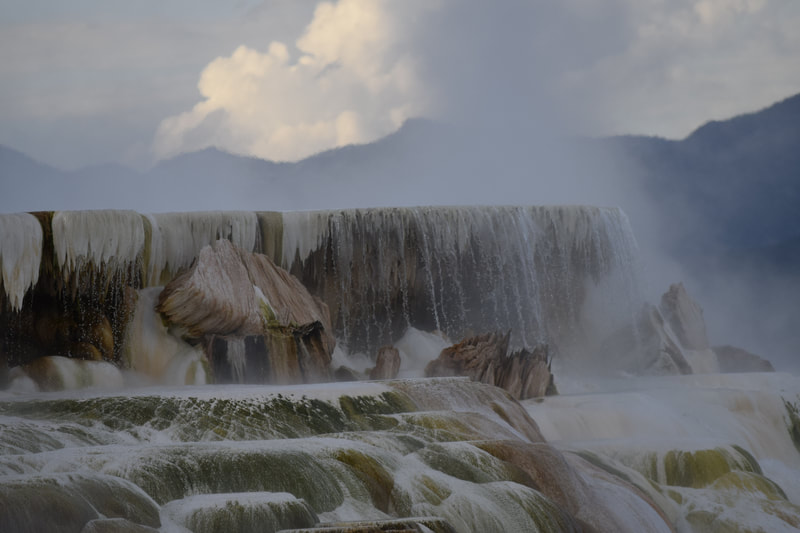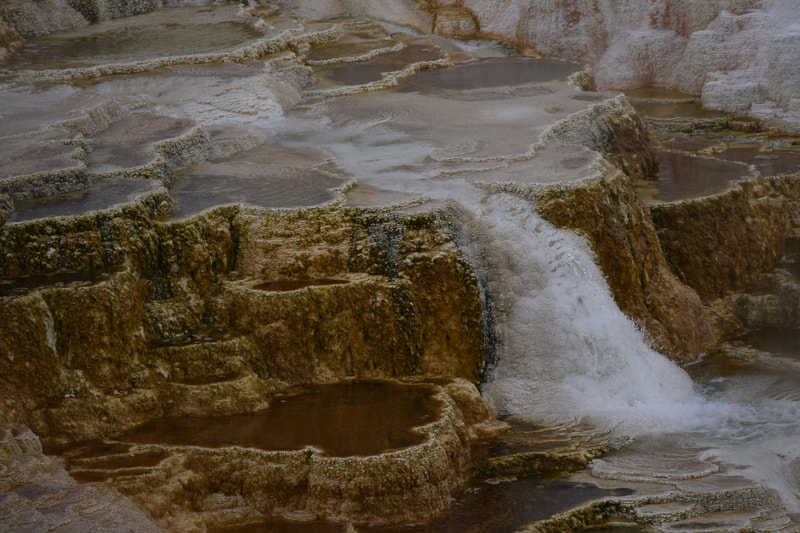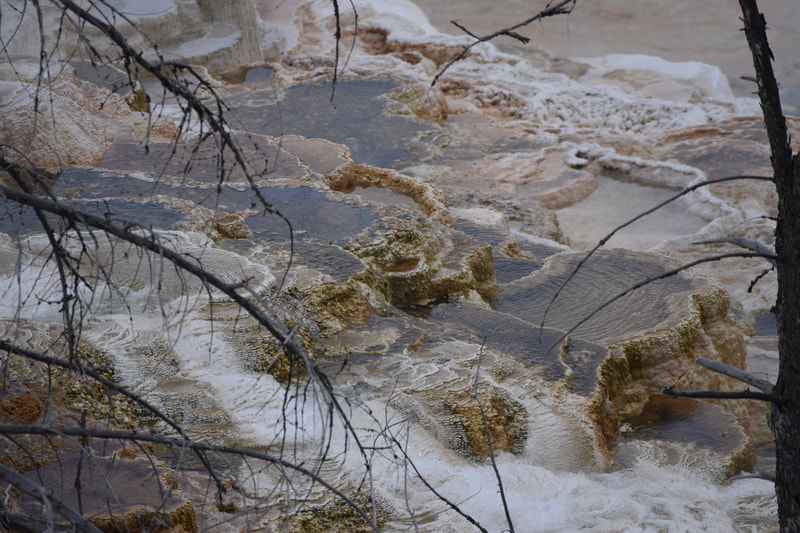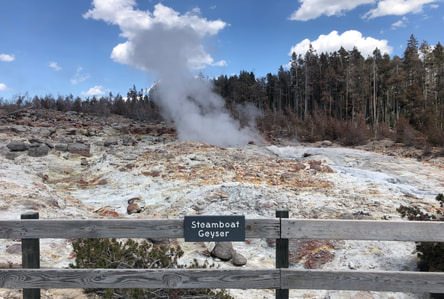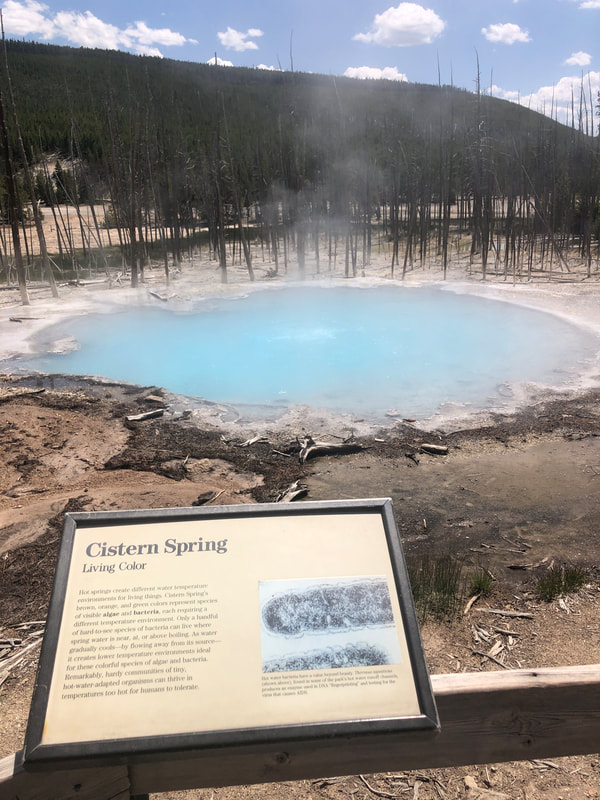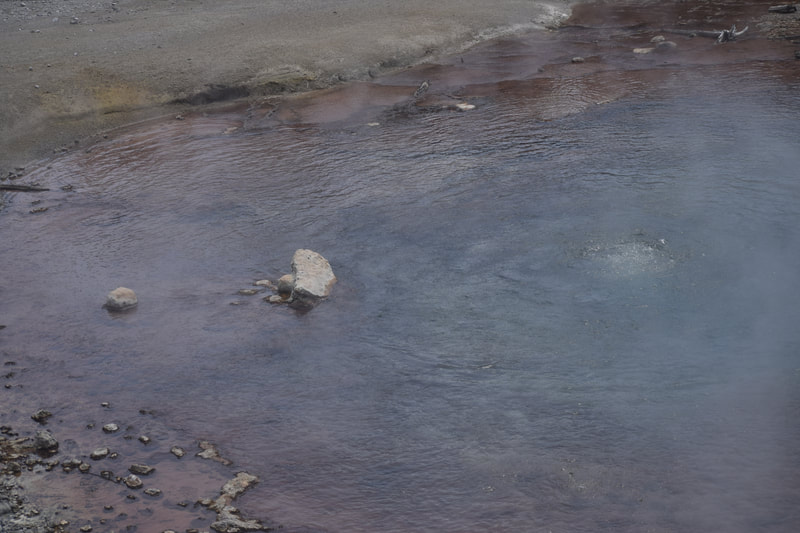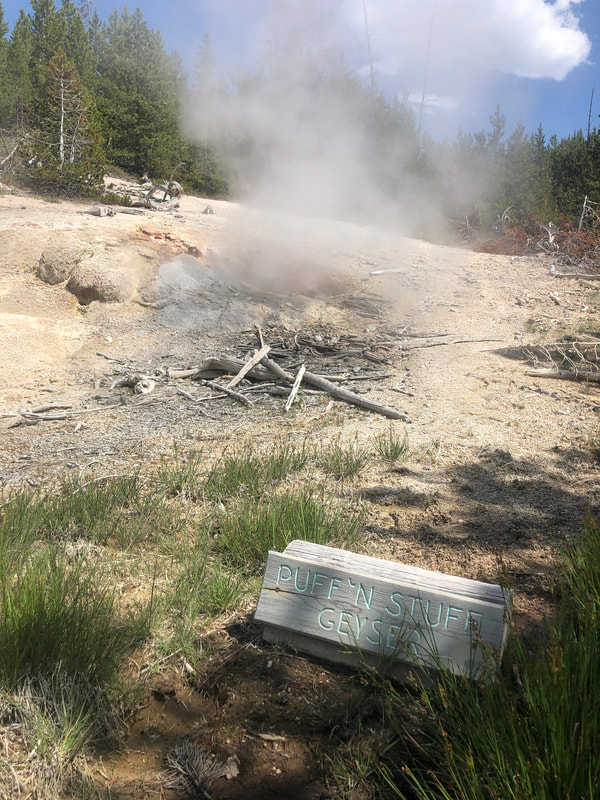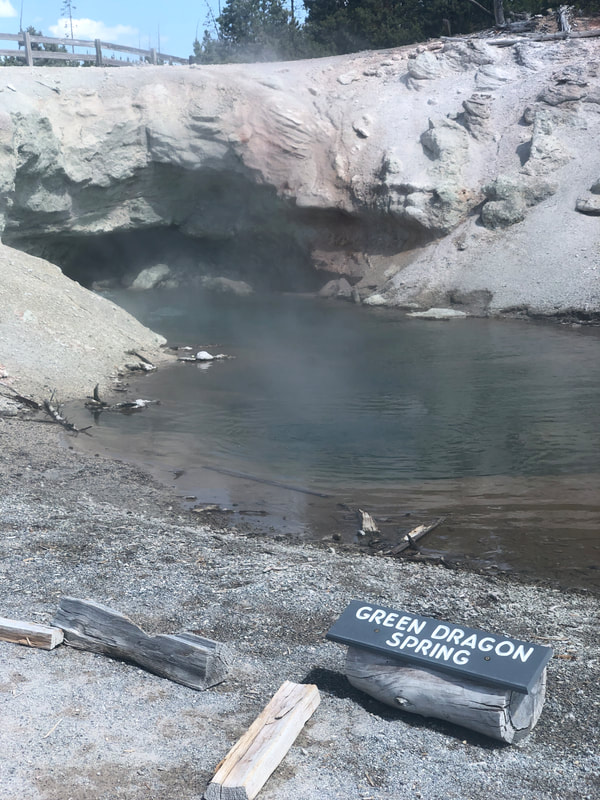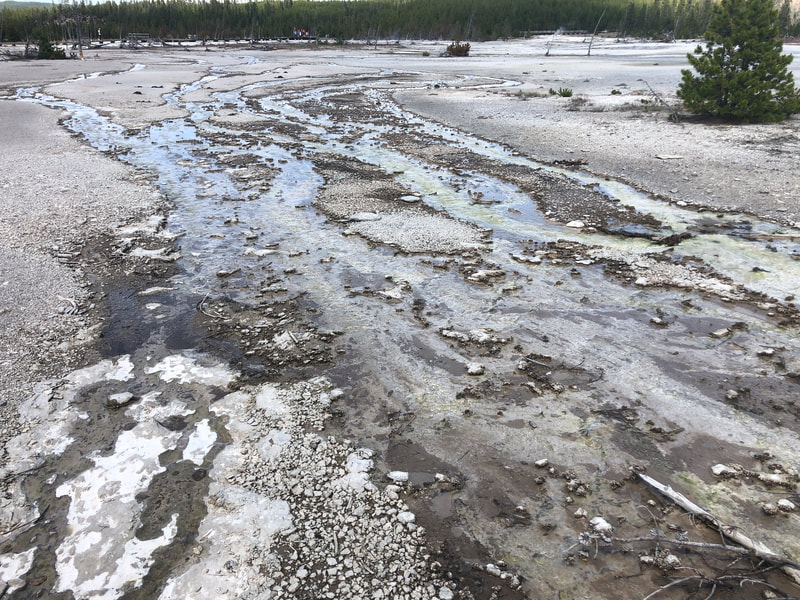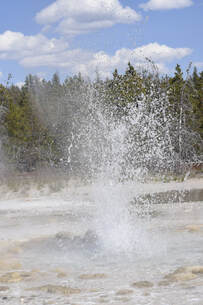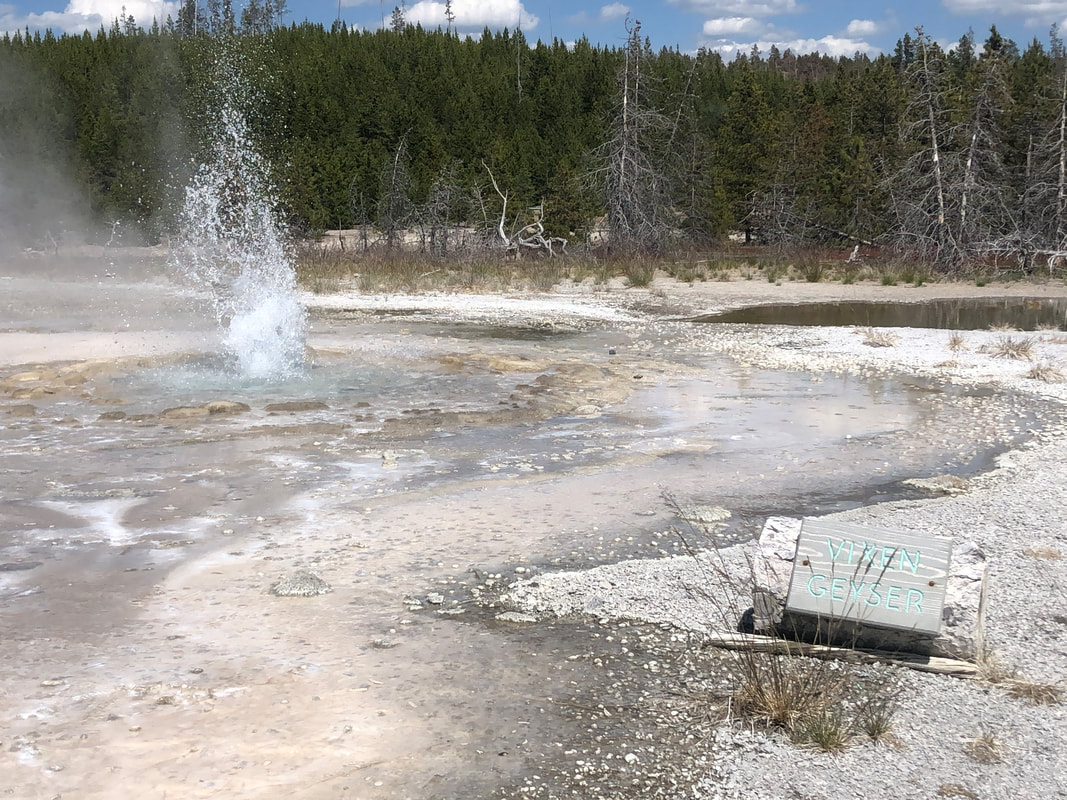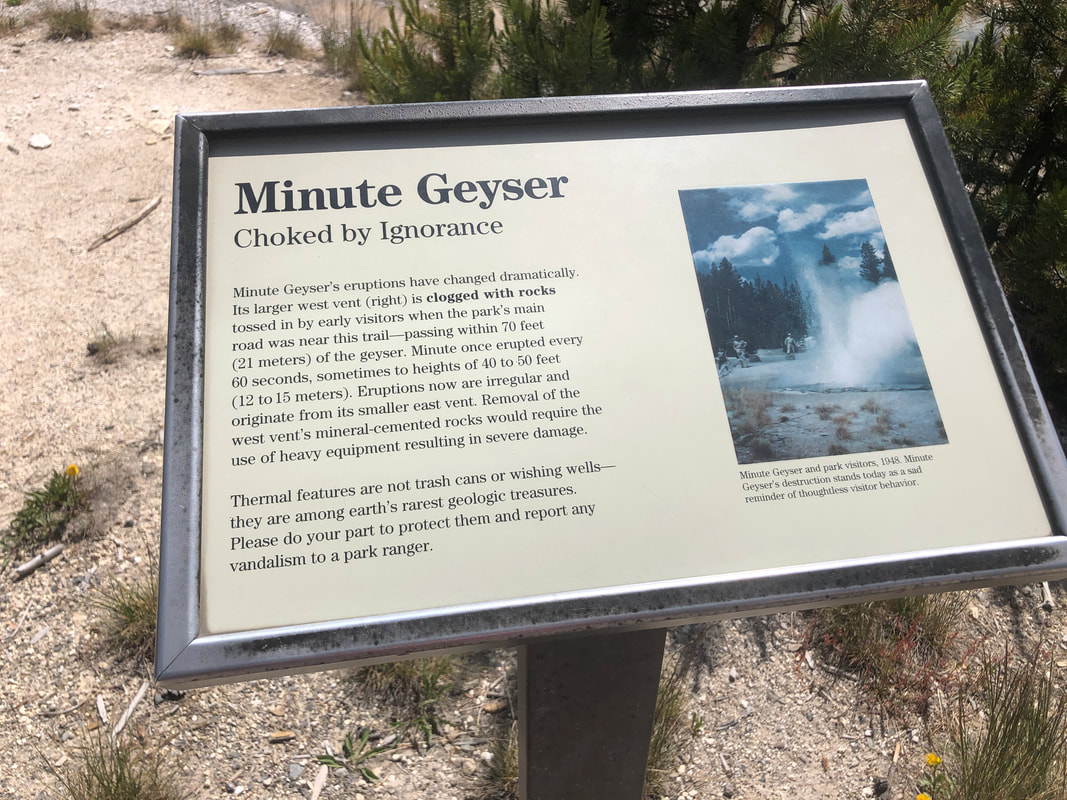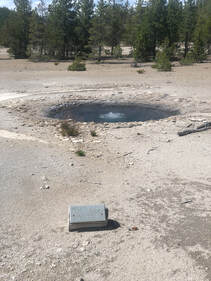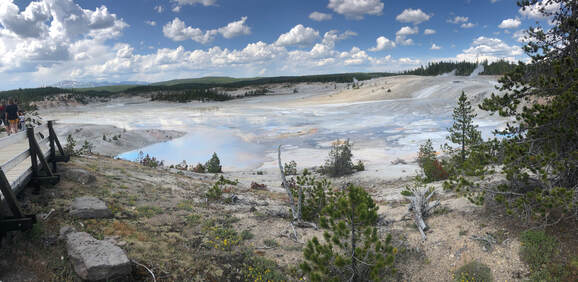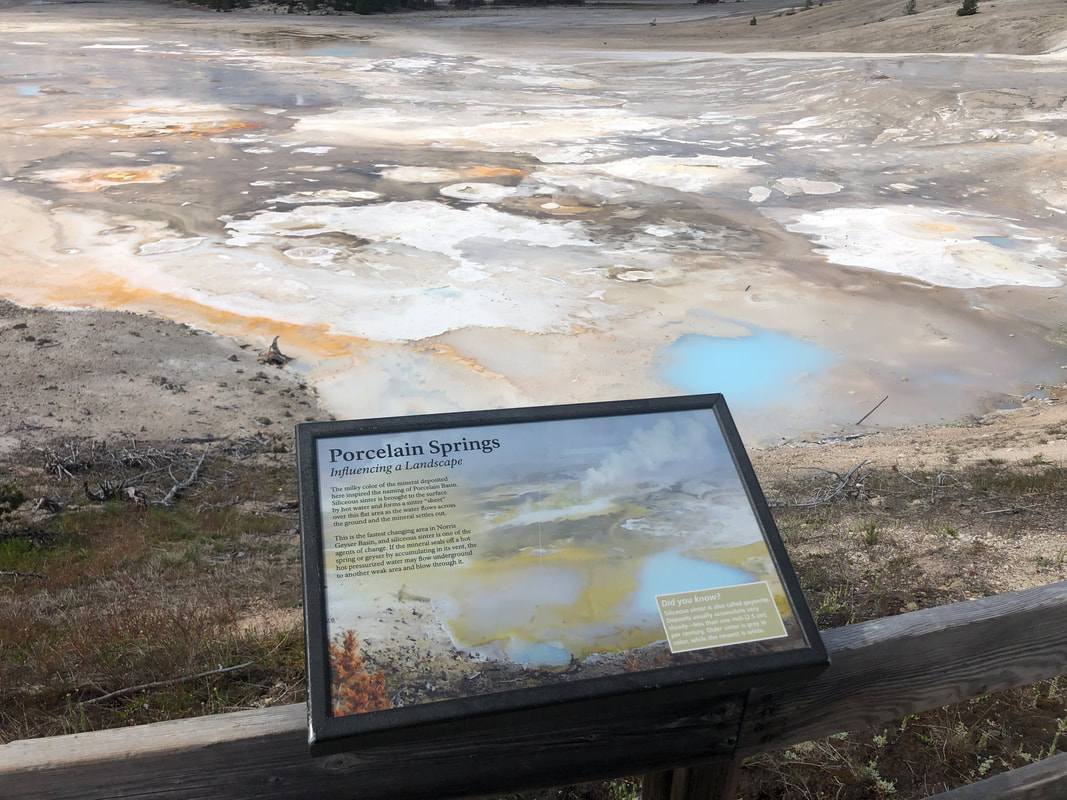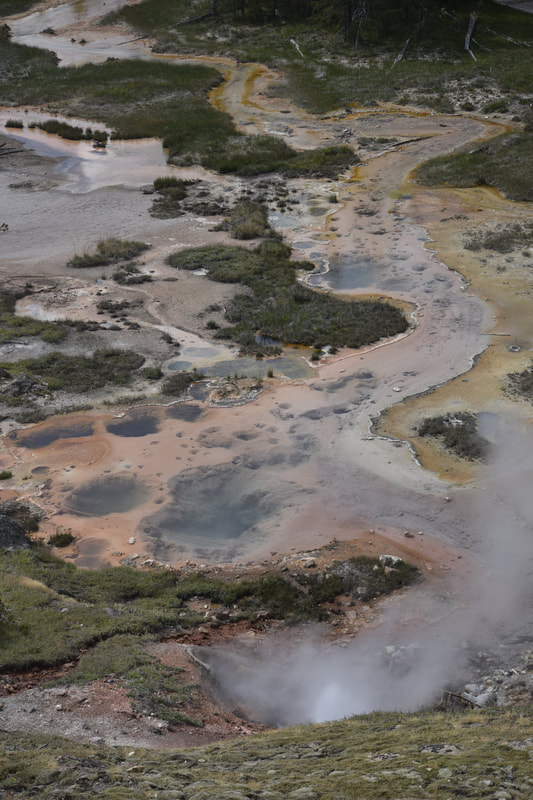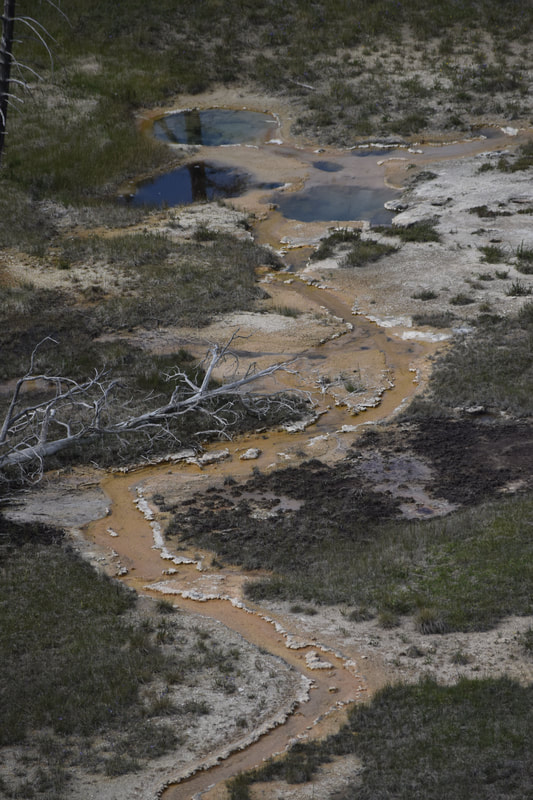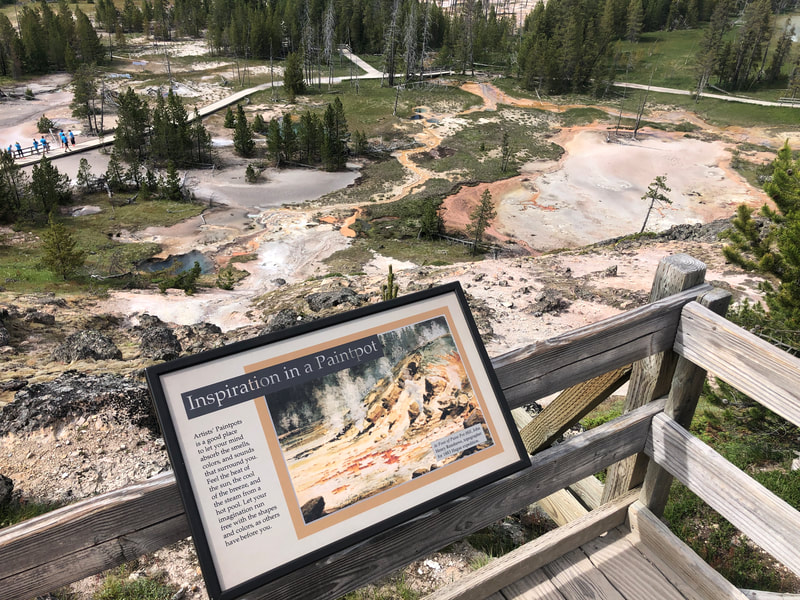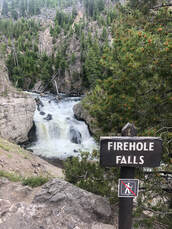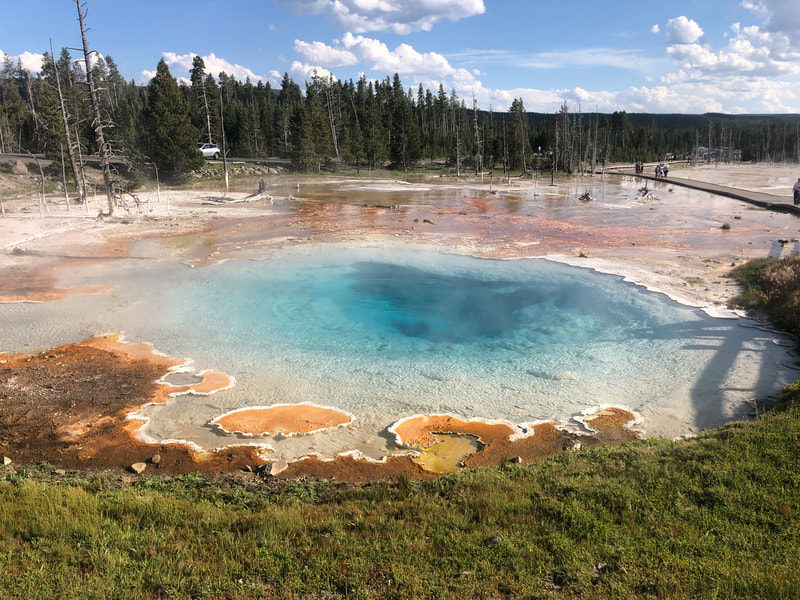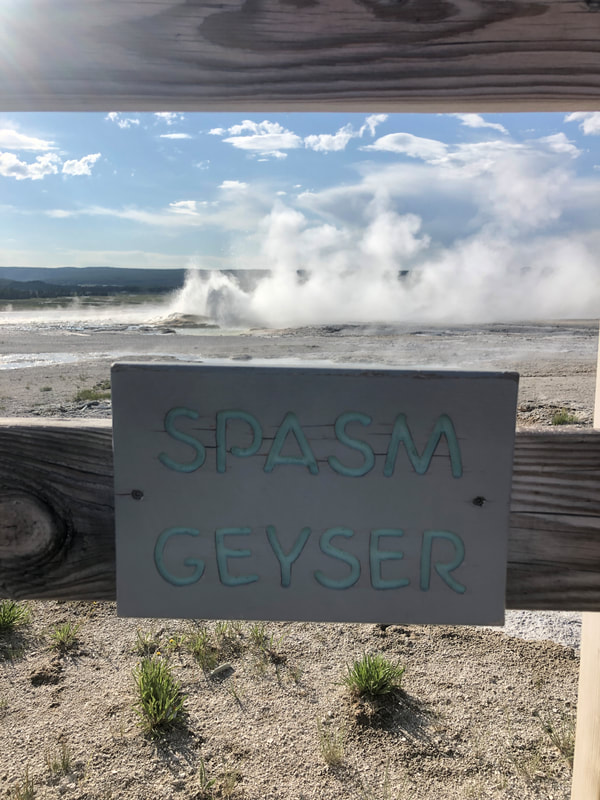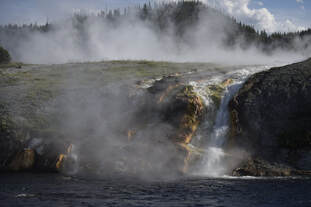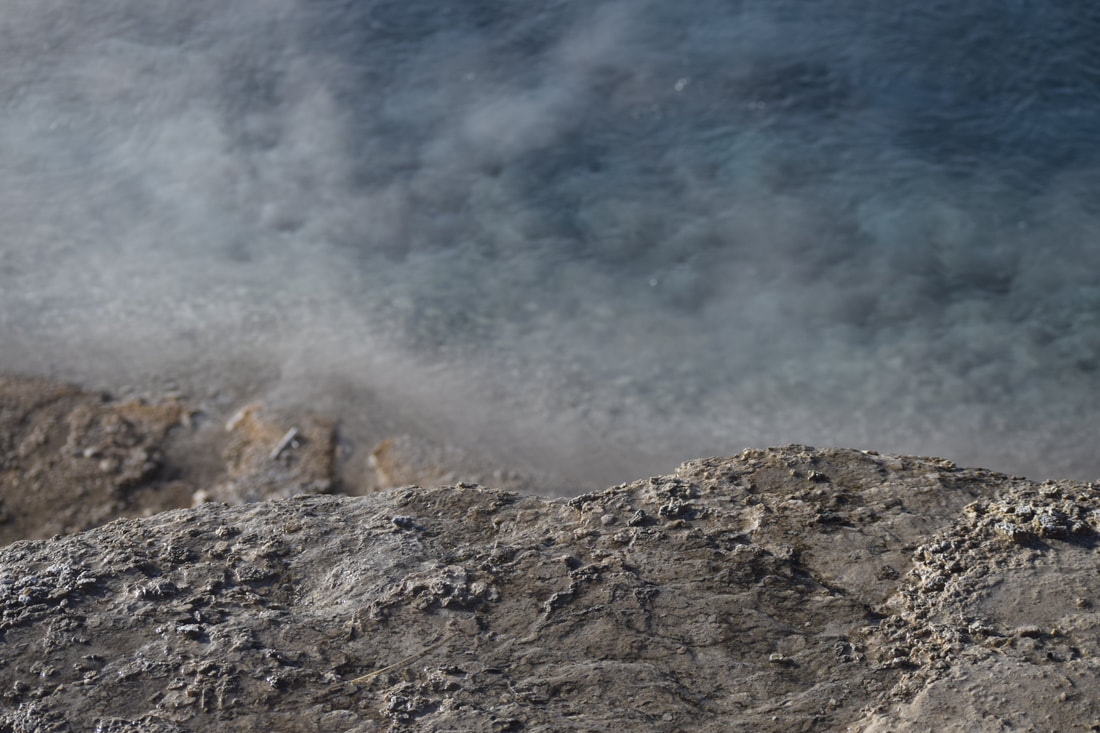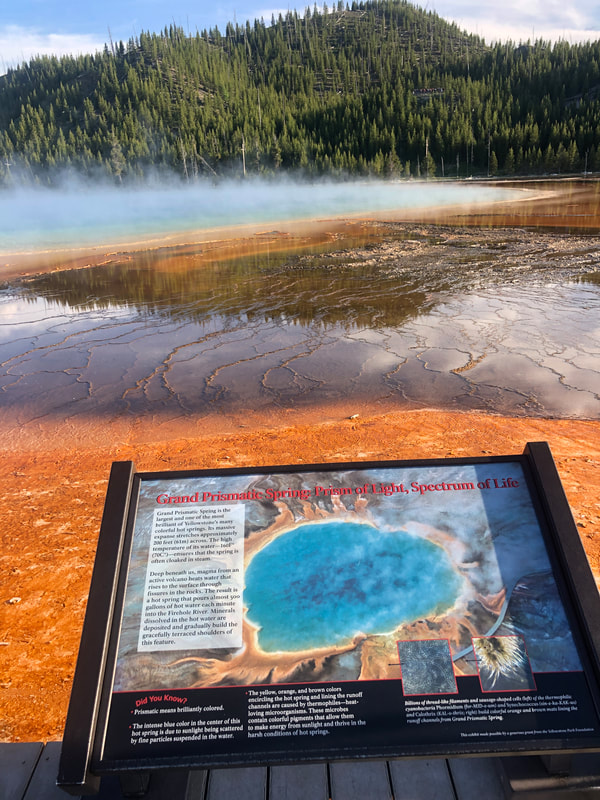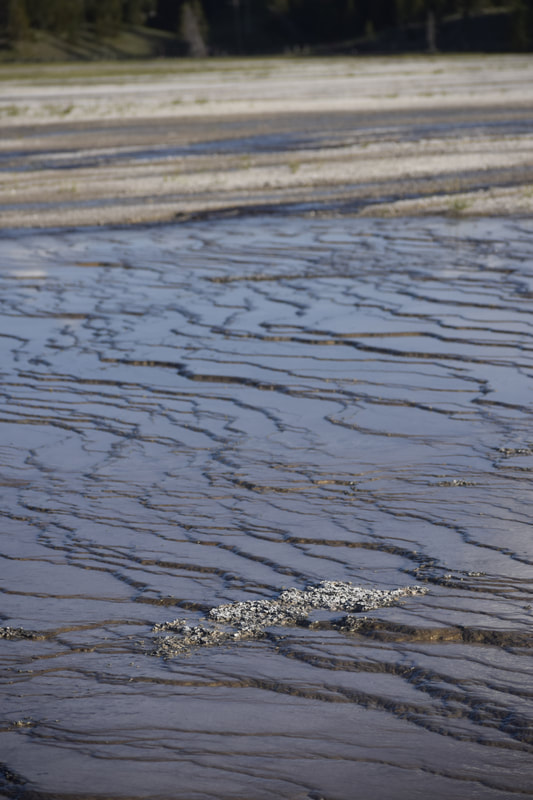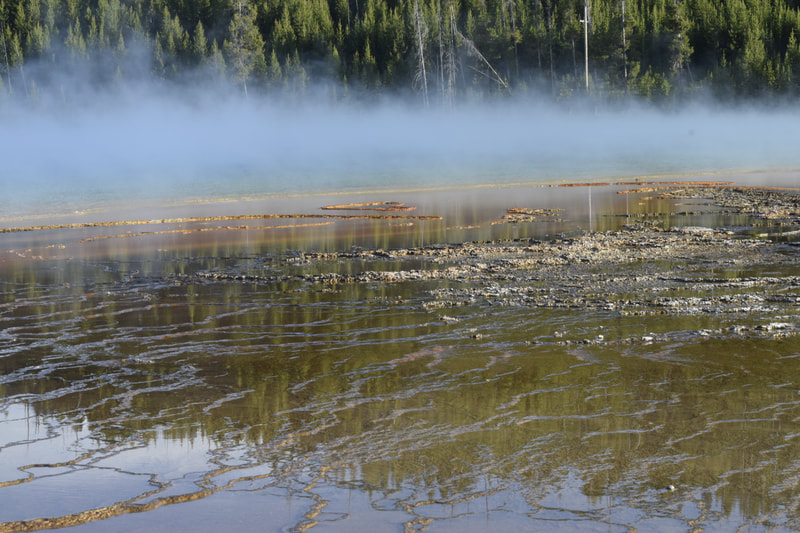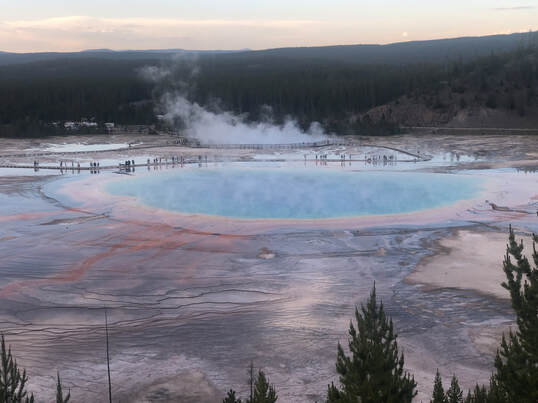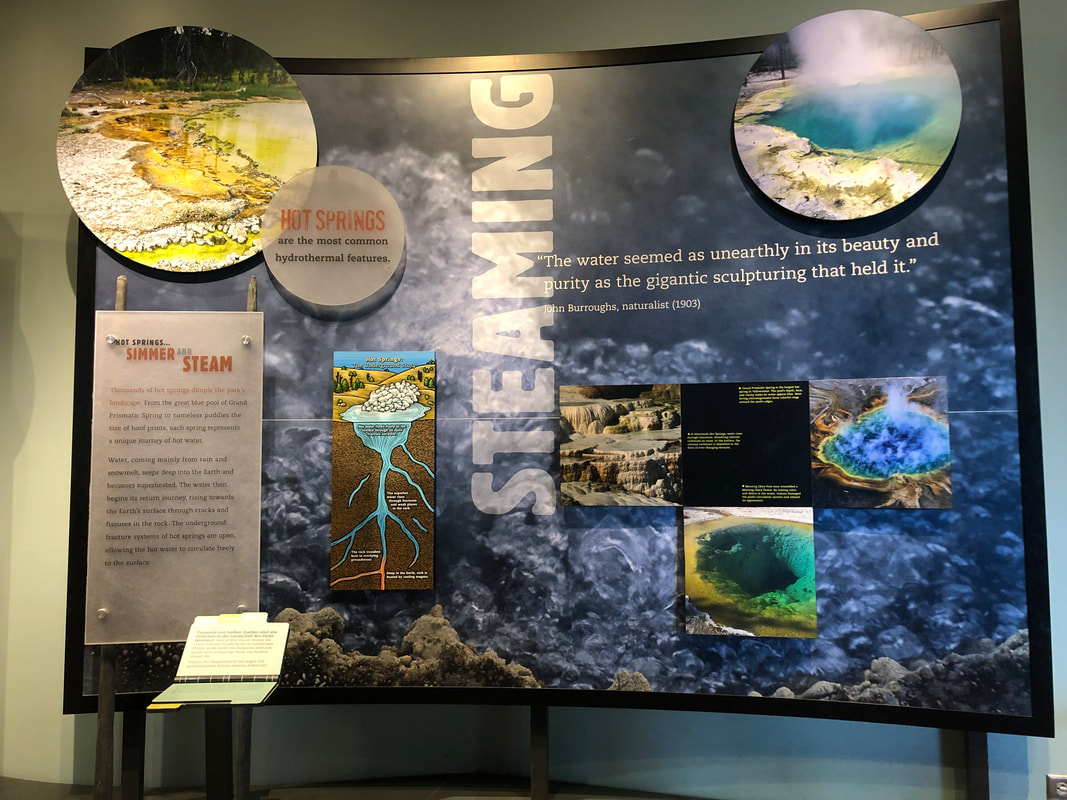 America’s first national park is home to one of the world's largest volcanoes. Magma nor ash spew from this supervolcanic hotspot, but constant heat affects the landscape and groundwater in spectacular ways. It’s no wonder why this part of America is protected. Yellowstone National Park encompasses over 28,000 square miles of sulphuric hot pots, glacier valleys, bubbling geysers, and picturesque lakes. In one week, John and I were able to see its highlights while backpacking through the backcountry and driving around its main roads. You can see our entire trip on our YouTube channel here! Before we stepped foot in the park, we did a lot of planning and research in a very short amount of time. Acquiring permits, preparing food, and packing were critical to our success in the backcountry. We wrote our Planning and Researching post to show every step we took. Days One-Five: Backpacking in the Backcountry Most of our time in the park was spent on the Thorofare Trail. We spent five grueling days hiking through some of the most remote parts of the park. Hiking south along Yellowstone Lake toward the Yellowstone River included forest fire damage, lakeside valleys full of wildflowers, and deep woods. 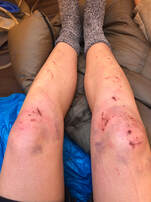 We were set to hike 30 miles and turn around, but due to a swiftly flowing river, we were forced to turn around after 16 miles. It was our first backpacking trip and even though we didn’t complete the trail, we learned a lot about being in the wilderness and can’t wait to hit the trail again! Our “10 Biggest Backpacking Takeaways” post lists some things we learned. 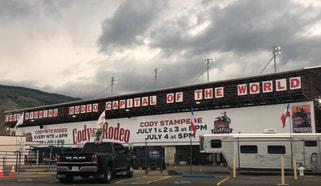 When we got off the trail on the Fourth of July, there was nowhere to stay in the park. Camping is only allowed at designated sites, and each site had already been filled. We were forced to look outside the park, so we looked beyond the park’s East Entrance. We headed out to Cody, Wyoming, with hopes of getting a good, hot meal and a soft bed. We only found one of these and also unfortunately missed the 100th annual rodeo. 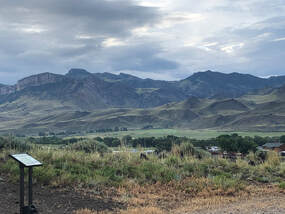 We stayed at a trailhead off the highway between Cody and Yellowstone's north entrance. We stayed at a trailhead off the highway between Cody and Yellowstone's north entrance. We got some burgers at Buffalo Bill’s Irma Hotel & Restaurant before finding a Bureau of Land Management spot to park my car camper. After each day of driving around the park, we left its boundaries to grab a bite and stay the night. Some nights were easier than others, but we wrote about where we ate and stayed each night in this separate post to help others who are in the same situation we were in! Day 6: The First Day of Driving 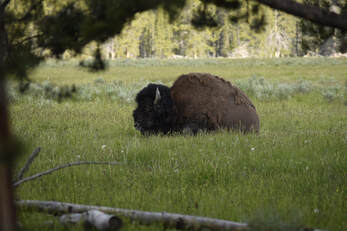 Our first day driving around the park started bright and early at the East Entrance. Almost immediately, John spotted some Bison in a valley just past the Fishing Bridge. We pulled over to snap some pictures of two hiding in the shade just yards from our car. We thought this was an up-close experience, but we had no idea what would happen at our next pulloff.  As we kept driving through the valley, we saw a group of cars stopped, so we pulled over as well. Everyone was on a small hillside, but John and I found a trail reaching from our car and into the grassfield. We walked out to the end of the trail and were still 50 yards from the closest bison. I took some pictures, but as I started to walk toward the hill for a different angle, the bison started to approach John! It got within 5 feet of him while the two stared at one another. John never lost his cool, and the bison turned to walk toward the road! Still struck with awe, we hopped into the car and continued driving to the Mud Volcano. Mud Volcano This was our first hydrothermal area in Yellowstone. It sits inside the Yellowstone Caldera and is constantly shifting. Magma below the surface creates mud pots, hot springs, and geysers. Some of the most acidic mud in the park is found here and caused by microscopic organisms on and below the surface. The Mud Volcano Trail is a half-mile boardwalk loop that passes Dragon’s Mouth Spring, Mud Volcano, Grizzly Fumarole, Sour Lake, Black Dragon’s Cauldron, Sizzling Basin, Mud Geyser, and Mud Caldron. It was truly fascinating to walk around and explore these sites. Across the street, the Sulphur Caldron is as acidic as battery acid! We checked it out before driving off to the next area, but even that didn’t come without a few stops to see wildlife including, for the first time, a black bear!!  Canyon Area This area has been torn apart by glacial movement, volcanic activity, and erosion all mixed together. You can see the layers of history in the incredible canyon walls that the Yellowstone River has cut through. We started our tour of the ‘Grand Canyon of the Yellowstone’ at Artist Point working our way south then north again along the north rim. Uncle Tom’s Trail was closed when we went, but the South Rim Trail was open, and we were still able to get close to the upper falls. As we continued northward, we drove up to Mount Washburn but quickly turned around as an afternoon thunderstorm rolled in. 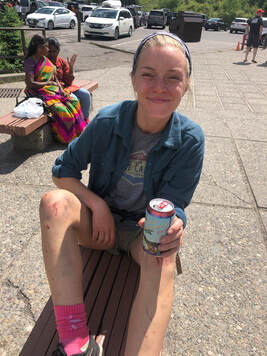 Tower-Roosevelt Our next stop was Tower Falls and the general store. Mid-day was approaching, and it was hot and crowded. John and I went in the general store for souvenirs and air conditioning but ended up with beers. We crushed them under the awning outside before continuing on to Tower Falls. It was a quick stroll to see the fall, but the trail continued past the viewpoint. We kept going the extra bit, and the trail led us to the shores of the Yellowstone River. We explored and hung out for a bit before deciding to head back up for lunch. We made a quick stop at the petrified tree to see what that was all about. The silica mold of an ancient redwood tree left us with more questions than answers as did most things in the park. Yellowstone is truly full of fascinating curiosities.  We decided to pull over at the Forces of the Northern Range trailhead. We wanted to stop for lunch and a group of people with binoculars caught our attention. Turns out, they were looking at bears way off in the distance, but by the time we had eaten, the bears had come much closer. We got a very good look at a momma and her cub as they nibbled on some flowers.  Mammoth Hot Springs We timed our arrival at Mammoth Hot Springs perfectly. The earlier shower had scattered some of the crowd, and many of the visitors had finished for the day or were making dinner. For periods of time, we had entire areas to ourselves which allowed us time to quietly ponder and talk about the perplexing landscape. We wondered and discussed a lot, because little of the science and geology on display answered our questions. 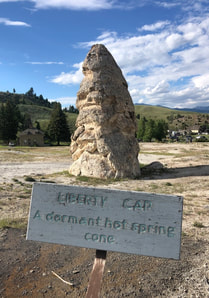 We started our walk at Liberty Cone. Most cone shaped mounds like this only grow to 1-2 meters, but this one is almost 14! It greets visitors on the way to the Mammoth Hot Springs Trail and is a spectacular site to see. That being said, it could not compare to its neighboring mineral fountain. Palette Springs was one of the most perplexing formations we witnessed in Yellowstone National Park. As hot steam rises through limestone, calcium carbonate is dissolved and carried to surface pools. The calcium carbonate is deposited and form stone curtains that show the pathways of overflowing water. These wonderful pools of steaming water are also homes to multi-colored bacterium. From organisms that feed on sulfur to organisms that photosynthesize, these pools are abloom with life. The Palette Springs boardwalk makes a loop through the lower area. We went clockwise to see Mound Spring, New Blue Spring, Cupid Spring, Grassy Spring, Dryad Spring, and Canary Spring before circling back to Cleopatra and Palette Springs. The entire time, we were enthralled by these formations and creations. It was one of my favorite areas in the entire park and the one that I have the most questions about. 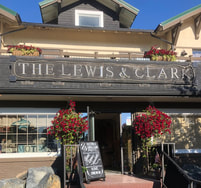 When our brains were fried from contemplation and our tummies started growling, we decided to head out the North Entrance toward our hotel. We grabbed some bar food at the Emigrant Outpost in Pray, Montana, on our way to The Lewis and Clark Motel in Three Forks. Day Seven: Heading Back South 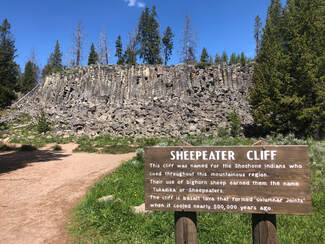 We woke up the next morning and hit the road back toward the park. After a stop in Bozeman for a quick, fluffy breakfast at Stuffed Crepes and Waffles, our first stop in the park was Sheepeater Cliff. Its name was not as gruesome as it sounded. It was named after the local group of Native Americans who ate and relied on the mountain sheep. We saw some marmots and a cute deer hiding in the woods before we drove off to another geyser basin. 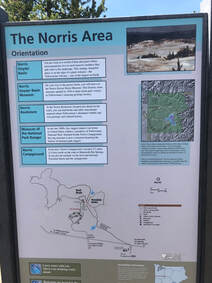 Norris Geyser Basin Norris Geyser Basin sits along two fault lines and a fracture in the Yellowstone Caldera. These cause frequent earthquakes and movements in the land. A park ranger said that every year new hot springs appear while others become dormant. We could see just how quickly things were changing, because part of the boardwalk in Porcelain Basin was roped off. The geysir basin is split into two sections: Porcelain Basin and Back Basin. Porcelain Basin is a large, colorful sight, but Back Basin provides close up views of individual geysirs. We chose to do the Back Basin Trail first.  The longer trails have smaller crowds, plus there was a lot more to see in this area including the tallest active geyser in the world, Steamboat Geyser! We watched and hoped for Steamboat to blow at the beginning of the Back Basin Trail just past Emerald Spring, but sadly did not see it erupt. The trail continues past Cistern Spring, Black Pit Spring, Echinus Geyser, Arch Steam Vent, Mystic Spring, Puff N’s Stuff Geyser, Green Dragon Spring, Blue Mud Steam vent, Yellow Funnel Spring, Porkchop Geyser, and Vixen Geyser. 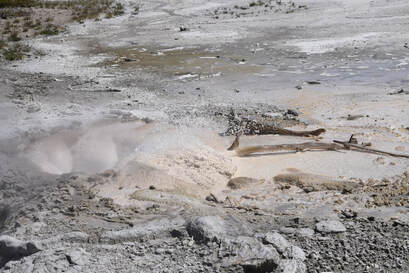 Porkchop Geyser is especially intriguing, because it made an epic comeback from dormancy in the 80’s. It shot rocks hundreds of feet into the air, it has since calmed back down and when we saw it was just a roiling hot spring. We got a surprise eruption from Vixen Geyser as we were leaving Veteran and Corporal Geysers. The little hole shot water about 15 feet into the air for several minutes. It was very impressive and unexpected. We finished the Back Basin Trail with Palpitator Spring, Fearless Geyser, Monarch Geyser Crater, and Minute Geyser before heading to the Porcelain Basin. We didn’t spend nearly as long in the Porcelain Basin, because we had spent nearly two hours on the Back Basin Trial. Plus, the Porcelain Basin Trail was shorter and much more crowded so we didn't need as much time. We stood at the overlook and did the short loop to see Congress Pool, Porcelain Springs, and Hurricane Vent before hopping back in the car to see what else the park had to offer. Madison Area I had never heard of or seen mud pots before, but when we arrived at Artist Paint Pots in the Gibbon Geyser basin, we could see exactly what they were named for. The gurgling pools of clay and nearby fumaroles were steaming along the hillside as we walked across the boardwalk overlook. Lower Geyser Basin Lower Geyser Basin is home to the Fountain Paint Pot Trail where John and I strolled around quickly looking at more mud pots and geysers. This is one of the few places in the park where you can see up to a half dozen geysers erupting in one place. We chose not to go down Firehole Lake Drive due to time constraints. The sun was starting to set, and we still had to see Grand Prismatic and Old Faithful! Midway Geyser Basin Grand Prismatic was one of the things I was most excited to see in Yellowstone. Those brilliant colors are iconic, and I couldn’t wait to take it all in. Before actually getting to Prismatic Spring, the trail crosses the Firehole River where steaming water flows over the edge of the spring into the river. The boardwalk then takes you to the top of the basin and leads along the rim of the mystical, blue Excelsior Geyser Crater and up to the copper mouth of Grand Prismatic. Grand Prismatic is the largest hot spring in Yellowstone National Park.Viewed from the park's boardwalk, rust colored stone ripples extended away from a constant cloud of dissipating steam. Glimpses of deep blue escaped the fog and reminded us of the single spring's size. Larger than a football field, this behemoth is best viewed from above.  Its grandeur was hard to comprehend, and it was impossible to see entirely from the boardwalk. We noticed hikers at an overlook on a hillside, and we knew the hike would be worth a better view. We drove south and found the Fairy Falls trailhead parking lot on our right. The Fairy Falls Trail leads to a great overlook right above Grand Prismatic. From up there, we could see how truly massive the entire geyser basin is. It was spectacular, but we didn't stay long. The sun was setting, and the mosquitoes were coming out. We hiked down and opted to skip Biscuit Basin in an attempt to get to Old Faithful before the sun set. 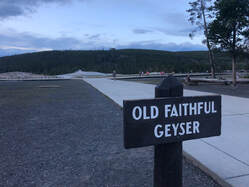 Upper Geyser Basin We arrived at the Old Faithful Visitors Center around 8:45 pm with just enough light out to see the geyser. There was hardly anyone waiting on the benches except a few families. The one closest to us believed it would erupt in the next 15-20 minutes. After a little while, another family approached and said that it was going to be almost another 30-45 minutes. We knew that, by that time, there would be no light left. We were starving, so we decided to save Old Faithful’s explosion for the next day and see if we could score a bed in the lodge.  John and I discovered that we could score a bed for the night at $450. After politely laughing at this price, we got phone numbers for some of the park’s campsites. Sitting and cooking dinner in the parking lot, we called and searched for an open spot. With no luck in the park again, we went out the West Entrance of the park and drove to Idaho. We found a secluded place to park my car camper with freecampsites.net and rested our heads next to a gently flowing creek Day Eight: The Final Morning The last morning of our trip started with breakfast from Old Town Cafe in West Yellowstone before embarking on our last day of driving through Yellowstone National Park. It was Sunday, and the only thing left we had left to see was Old Faithful erupting. It took us a lot longer than we expected to get there, because the crowds had grown dramatically. Parking lots were overflowing and causing jammed turn lanes, plus more people meant more cars parked on the side of the road when wildlife was visible. It was extremely frustrating, but John and I were unbelievably happy that our past two days hadn't been like this. We finally arrived at the Old Faithful Visitor Center around noon, and it was also packed. There were people everywhere. We had 30-45 minutes to spare until the geyser’s predicted eruption. I walked through the history and science museum before we met on the boardwalk and found a seat to watch the show.  I call it a show, because the eruption went on for several minutes! We were not expecting this at all. Every other geyser we had seen would shoot off once or rumble lowly, but Old Faithful shot water dozens of feet high for minutes. Everyone around us “oohed”, “aahed”, and applauded afterwards. As soon as it ended, so did our vacation. Everyone around us left the area, and we eventually meandered our way to the car looking back at what had been a crazy, wonderful, and beautiful trip. You can see our entire trip on our YouTube channel here!
0 Comments
Leave a Reply. |
Talkin' 'bout Tacos:
I'm Taylor, aka Tacos! I am sharing my journeys and experiences from across the world hoping to inspire travel and adventure in all who read. Archives
June 2024
|
